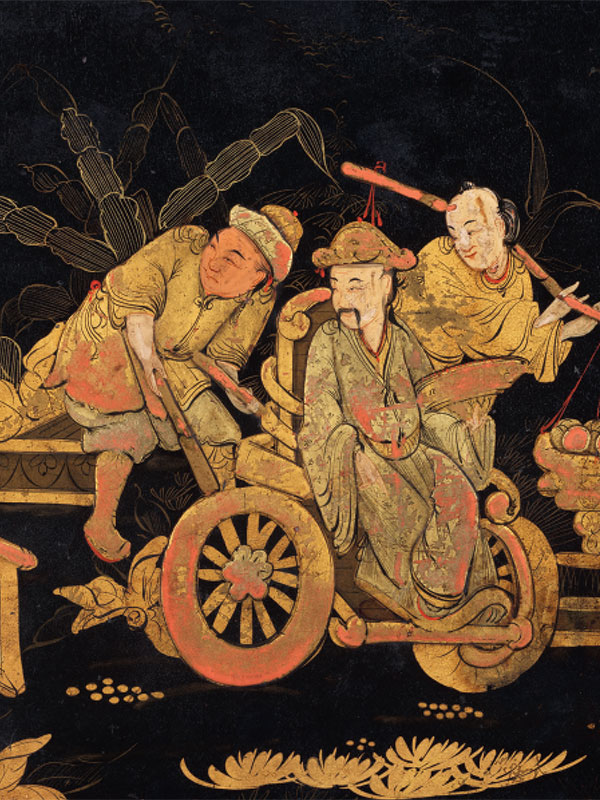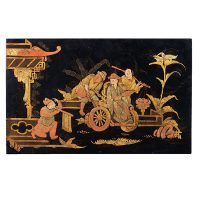Chinoiserie lacquer panel
Europe, 18th or 19th century
A rectangular lacquered wood panel, depicting a central figure seated in a sedan chair, being wheeled by a figure behind him. A third figure is beside him, carrying a yoke, suspending baskets of fruit. All three figures are looking at a fourth figure, who is crouching on the left of the scene, holding in his right hand a flag-like ornament, and raising his left arm to point at something behind him. The scene is also populated by a pavilion, trees and plants. The lacquer has been partially raised and gilded but shows through the red underground in quite a few places. Two raised crossbars are applied to the back of the panel.
This panel is not Asian but was most probably made in Europe in the Chinese manner. The technique of lacquering has been faithfully copied. The two “Chinese” characters on the flag-like object the figure on the left is holding, cannot be deciphered and are most probably not Chinese. Emile de Bruijn, Assistant National Curator of Decorative Arts of the National Trust and author of “Borrowed Landscapes, China and Japan in the Historic Houses and Gardens of Britain and Ireland” comments as follows: I feel that the panel was made in Europe. It looks like the intention was to make it look ‘Chinese’ but the details of the pavilion, the plants and the figures’ clothes look like they were painted by a non-Chinese hand, probably by someone who did not see the real thing. Fancy illustrations of China were popular in Europe from the late 17th century onwards, particularly after the publication of Stalker and Parker’s book on lacquer. It was popular in the 18th century when furniture makers like Thomas Chippendale decorated their furniture with lacquer work. There was a revival of the art of lacquering in the 20th century. This panel could be British, but French or German is a possibility.


